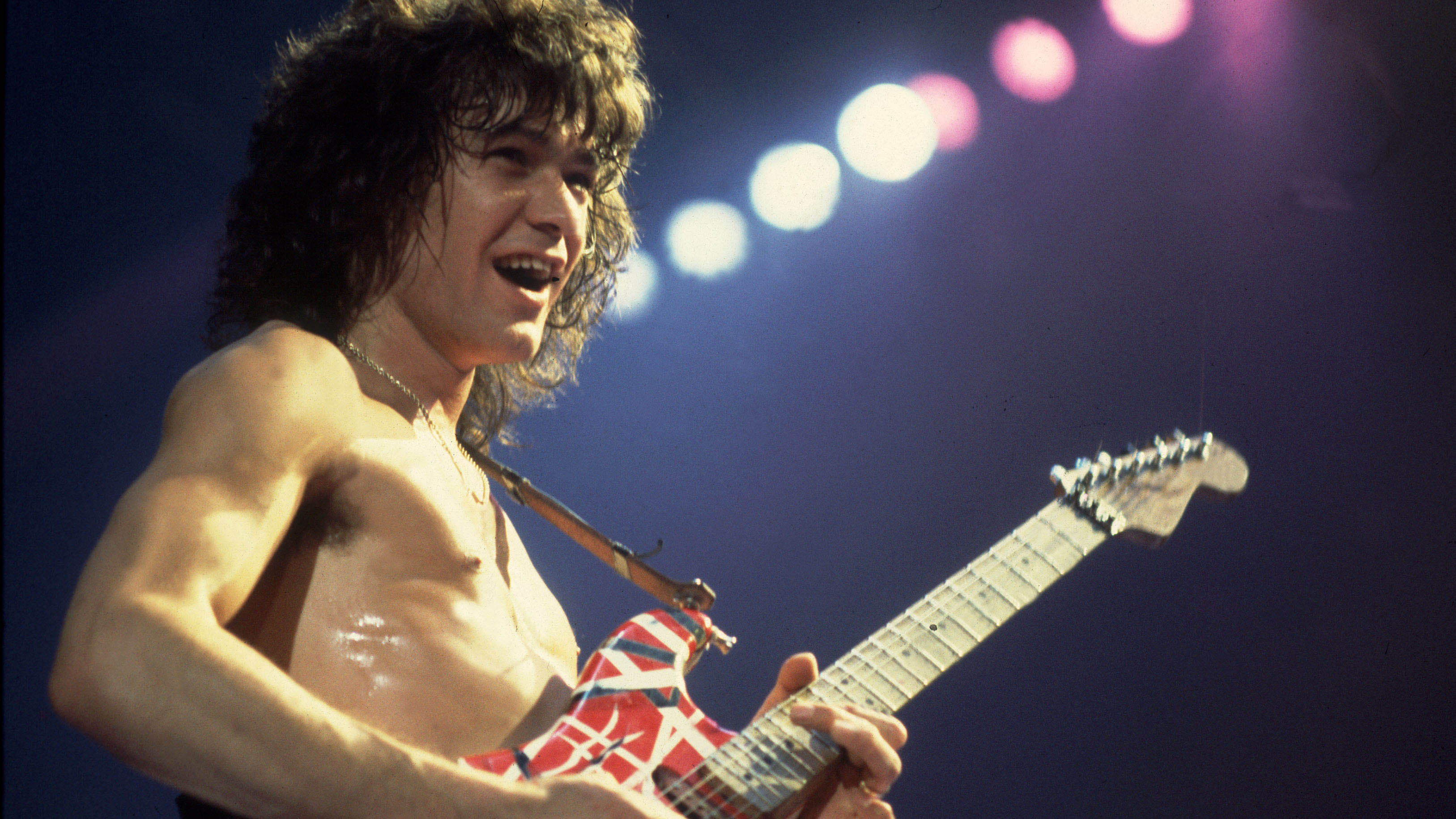“The world’s greatest guitarist is what everyone says. It’s kind of a dicey title”: A deep dive into the Van Halen catalogue proves the point
EVH didn’t like being called the greatest. That doesn’t make it any less true

In a much-discussed excerpt from his forthcoming memoir, Brothers, Alex Van Halen writes to his late brother: “The world’s greatest guitarist is what everyone says. It’s kind of a dicey title. You never liked it.”
It’s understandable that Eddie might resist the title. Labels can be uncomfortable. But the truth is inescapable. Musical opinions are subjective, but the fact that Eddie Van Halen was the finest electric guitarist of his generation is a reality as irrefutable as gravity.
Like it or not, EVH, you were the best we’d ever seen. In six deep cuts from Van Halen’s golden era, we explain why…
I’m The One (Van Halen, 1978)
Eruption was the young Eddie’s definitive guitar statement, but I’m The One demonstrated he could do it in the context of a song. It also introduced the world to Van Halen’s phenomenal swing. Shuffles are always a fine art, but to groove this hard at 230bpm is scarcely believable.
Eddie throws in blazing lead fills and drops back into the riffs without once wavering from his telepathic sync with Alex Van Halen. It’s tempting to call it inhuman, but no computer has ever grooved like this. It could only be human, and it is humanity at its finest.
Spanish Fly (Van Halen II, 1979)
The first Van Halen album contained a lifetime’s worth of guitar innovation, so it is if anything even more impressive that Eddie was producing new tricks just a year later. Translating his Eruption tapping technique to classical guitar was one thing, but Eddie somehow lost none of his aggression in the process.
The ascending triplet sequence that begins at 0:18 is ferocious. Eddie picks the first note and the last three in every group of six, hammering on the others. Countless guitarists ripped it off, but none matched his fire, nor the effortless fluidity of his tapped phrases.
Want all the hottest music and gear news, reviews, deals, features and more, direct to your inbox? Sign up here.
Romeo Delight (Women and Children First, 1980)
Although Eddie often used tapping for large interval leaps, he was capable of absurd fretting hand stretches, as he demonstrated on Ice Cream Man (1978) and on this underrated blaster that opened Van Halen’s legendary 1983 US Festival set. Many guitarists try to tap phrases like the face-melter at 1:55, but fretting it all with one hand meant Eddie kept his signature pick attack.
Without catching breath, EVH produces a series of the lairiest string bends, yanking his strings up four frets at a time like a jet-fuelled Albert King. We’ve somehow got this far without mentioning Eddie’s explosive tapped harmonics, so just check out this intro.
Push Comes to Shove (Fair Warning, 1981)
Van Halen’s funk crossover fares better than most thanks to Eddie’s unparalleled ability to sit behind the beat. It’s worth getting out headphones to hear the way his layered parts interweave. He swells those opening chords beautifully, perfectly controlling his guitar on the edge of feedback.
He doesn’t even pick a note for the song’s first 40 seconds, articulating everything with fretting hand slides while riding his volume control. The solo is an adventure in itself. Tendon-threatening stretches abound, with Allan Holdsworth-inspired shapes that find Eddie getting away with notes that would sound flatly wrong coming from almost anyone else.
Little Guitars (Diver Down, 1982)
Van Halen’s irresistible appeal came from the fact they were fun, and everything about Little Guitars is fun: the preposterous mini Les Paul that Eddie played it on, that irrepressible riff, Eddie grinningly admitting he “cheated” at the flamenco-inspired intro.
Where a classical virtuoso would play the bassline with the thumb and fingerpick the high notes, Eddie thought, “screw this, it’s too hard,” and applied his signature hammer-on approach to the bassline while tremolo picking the high notes with a plectrum.
While Little Guitars is playful, it’s far from stupid: it grooves as well as any Van Halen tune and the riff triumphantly uses major and minor triads, exemplifying how Eddie expanded hard rock harmony beyond power chords.
Drop Dead Legs (1984, 1984)
Another feelgood intro, and another example of Eddie’s mastery of the volume pot: that switch from clean to dirty when the drums enter comes from controlling the guitar, not stepping on a pedal. Many assume that Edward Van Halen, undisputed master of the Floyd Rose, played this riff with the whammy bar.
In fact, all those slinky moves come from fretting hand bends, hammers, and slides. Eddie’s tone walks the tightrope of being aggressive enough for metalheads and sweet enough for the radio, and his timing continues to be worthy of Nile Rodgers. The exuberant outro is the sound of brothers with a deep musical bond, and that’s how Van Halen should be remembered.




